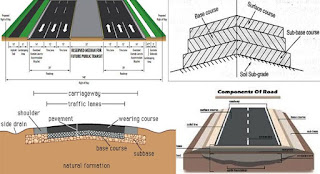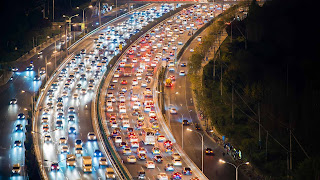Transportation Engineering is the study of the development, planning, designing, material study and management, and pavement design. Along with this traffic engineering and maintenance are also studied.
Transportation Engineering in India can be studied in 5 parts:
- Development & Planning
- Geometric Design
- Material Study
- Pavement Design
- Traffic and Maintenance
1. Developing & Planning
Indian Transportation development and planning date back to 1927 where the committee was formed called "Jayakar Committee" which gave its recommendation in February 1928.
This Committee proposed few steps for large-scale change in India's highway development.
- Consider Road Development as a matter of National Interest.
- Tax on petrol and Funds should be colled=cted with forming Central Road Fund in 1928.
- Form an Advisory body called "Indian Road Congress" in 1934, a technical body to pass plans.
- Form a research and development organization called "Central Road Research Institution" in 1950.
After this, there was a 20-year road plan executed starting from 1943 which plans and develops roads for the next 20 years.
- First 20-year plan 1943- Nagpur
- Second 20-year plan 1961-Bombay (Finished 2 years early)
- Third 20-year plan 1991-Lucknow
This road development had different road pattern such as
- Rectangle & Block Pattern
- Star & Block Pattern
- Star & Circular Pattern
- Star & Grid Pattern
- Hexagonal Road Pattern
2. Highway Geometric Design
- Cross Slope or Camber
Given by, y=2x^2/n.W
- Stopping Sight Distance
Given by, 0.278V.t + V^2/254.(f∓S%)
- Overtaking Sight Distance
Given by, d1=0.278Vb.t
d2=b+2s
d3=0.278Vc.T
- Overtaking Zone
OSD=d1+d2 for one-way traffic.
or
OSD=d1+d2+d3 for two-way traffic.
- Design of Superelevation
Given by, e+f=V^2/127R
Limiting e till 0.07 and f till 0.15.
- Transition Curves
Here we have three formula,
1. L=0.0215V^3/CR
where C=80/75+V
2. L=2.7V^2/R for Plain and Rolling Terrain
or
L=V^2/R for Hilly Area
3. L=150x for Plan & Rolling Terrain
=100x for Built-up Area
=60x for Hilly Area
where x=(w+E)e or x=(w+E)e/2
- Grade Compensation
Grade Compensation=(30+R/R) if R<45
=75/R if R>45
Compensated Gradient=Gradient-Grade Compensation.
- Vertical and Horizontal Curve
3. Material Study
The material such as soil, aggregates, bitumen cement, and concrete which required to be in order with Indian Standards.
Test on Soil and Aggregate:
1. Group Index of Soils (G.I.)
G.I.=0.2a+0.01bd+0.005ca
where a=(P-35)≯ 40
b=(P-15)≯ 40
c=(Wl-40)≯ 20
d=(Ip-10)≯ 20
0≤G.I.≤20
2. Plate Bearing Test
k=P/0.125
ks=k.Ps/P
3. California Bearing Ratio (CBR) Test
CBR=(Load on sample/load on standard Aggregate)x100
4. Test on Road Aggregate
- Aggregate Test
- Shape Test
- Los Angeles Abrasion
- Aggregate Impact
Now test on Bitumen:
- Penetration Test
- Ductility Test
- Float Test
- Viscosity Test
- Solubility Test
- Softening Point Test
- Spot Test
Marshall Method Bituminous Mix Design:
- Theoretical Specific Gravity
- Bulk Specific Gravity
- Perfect Air Void
- Percent Volume of Bitumen
4. Pavement Design
1. Flexible Pavement
Method of Flexible Pavement
- Group Index Method
- CBR Method
- Triaxial Method
- Mcleod Method
2. Rigid Pavement
- Determination of dimensions
- Determination of stress
- Design of Concrete Joint
5. Traffic and Maintenance
Maintenance of highway is also classified in two parts according to two Pavement.






Comments
Post a Comment
Thank You for visiting, if you have any questions please feel free to ask: